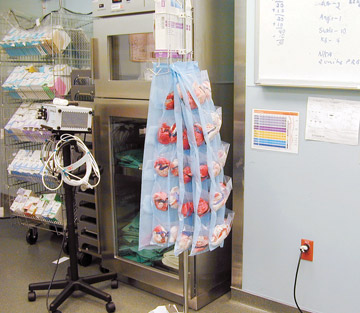When it comes to retained surgical items (RSI), you shouldn't assume anything, you should prove it. And if you don't see it, you should find it. Working in surgery, we all dread the possibility of an RSI, whether it's a sponge, a needle or an instrument that's left inside the patient after a procedure. And yet we still see these mistakes happen all too frequently.
RSIs usually stem from 2 factors: unreliable surgical item management practices and poor communication. When members of the OR team fail in these areas, they set themselves up to leave something behind. An RSI is not just one person's error, it's the result of a series of mistakes from the surgical team that any one person could have prevented. All that may sound scary, but it's important to remember the stakes. Here are 5 strategies to ensure a retained item is truly a never event at your facility:
.svg?sfvrsn=be606e78_3)

.svg?sfvrsn=56b2f850_5)